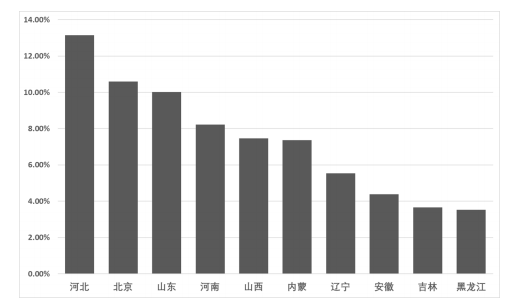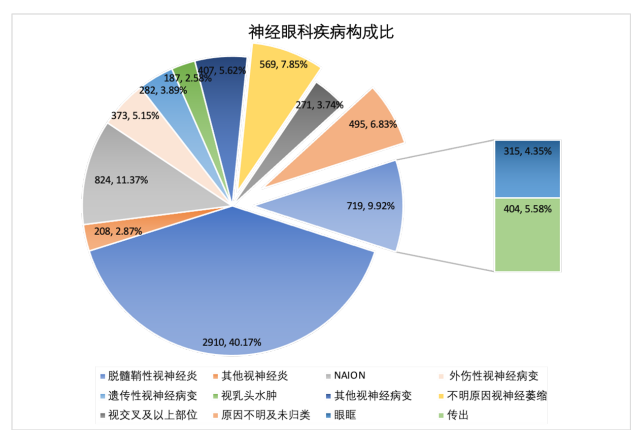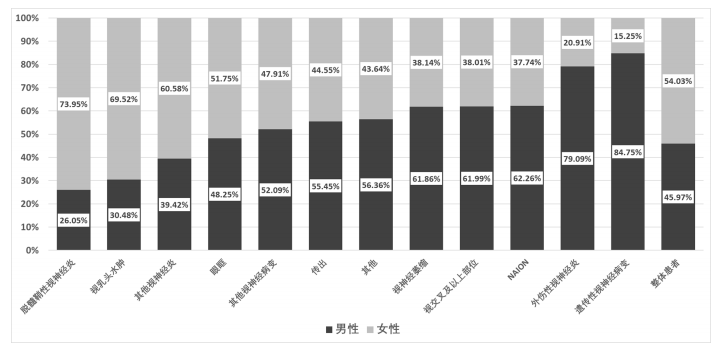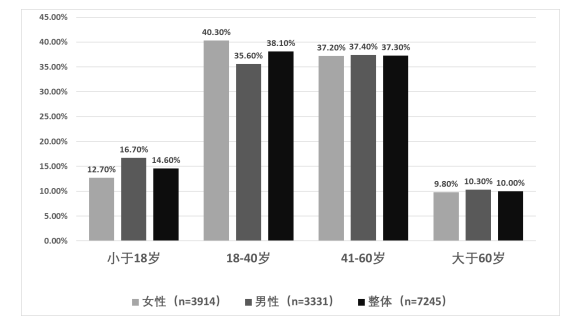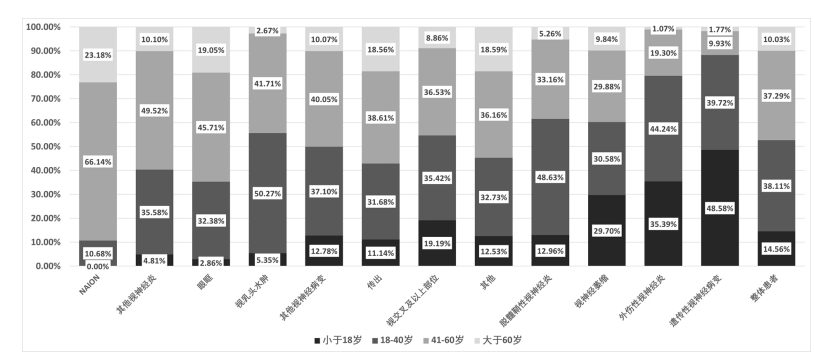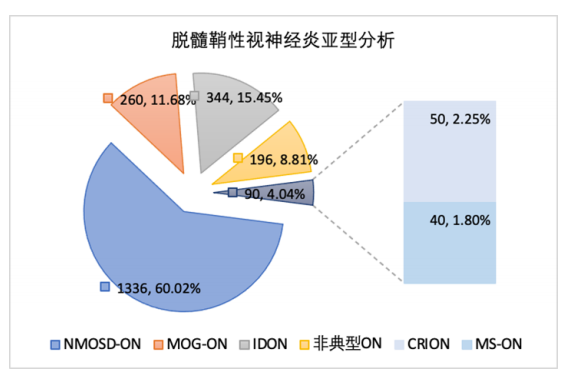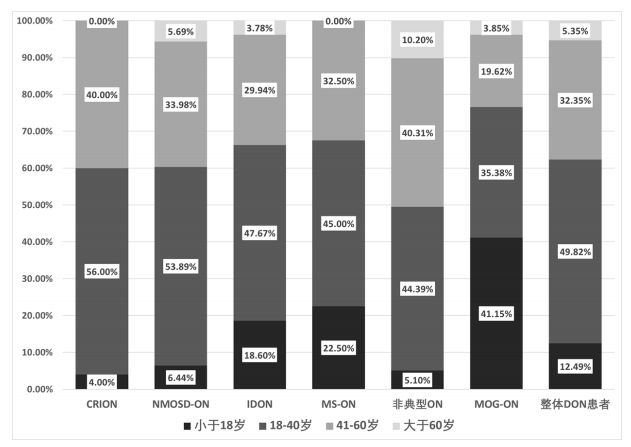1、宋宏鲁, 魏世辉, 孙明明, 等. 《中国脱髓鞘性视神经炎诊断和治
疗循证指南(2021年)》解读[ J]. 中华眼底病杂志, 2021(10): 753-757.
Song HL, Wei SH, Sun MM, et al. Interpretation
of Evidence-Based Guidelines for Diagnosis and Treatment of
demyelinating optic neuritis in China(2021)[ J]. Chinese Journal of
fundus Diseases, 2021(10): 753-757.宋宏鲁, 魏世辉, 孙明明, 等. 《中国脱髓鞘性视神经炎诊断和治
疗循证指南(2021年)》解读[ J]. 中华眼底病杂志, 2021(10): 753-757.
Song HL, Wei SH, Sun MM, et al. Interpretation
of Evidence-Based Guidelines for Diagnosis and Treatment of
demyelinating optic neuritis in China(2021)[ J]. Chinese Journal of
fundus Diseases, 2021(10): 753-757.
2、Stunkel L. Big data in neuro-ophthalmology: international classification
of diseases codes[ J]. J Neuroophthalmol, 2022, 42(1): 1-5.Stunkel L. Big data in neuro-ophthalmology: international classification
of diseases codes[ J]. J Neuroophthalmol, 2022, 42(1): 1-5.
3、Cherayil NR, Tamhankar MA. Neuro-ophthalmology for internists[ J].
Med Clin North Am, 2021, 105(3): 511-529.Cherayil NR, Tamhankar MA. Neuro-ophthalmology for internists[ J].
Med Clin North Am, 2021, 105(3): 511-529.
4、Rucker JC. Neuro-ophthalmology of systemic disease[ J]. Semin
Neurol, 2009, 29(2): 111-123.Rucker JC. Neuro-ophthalmology of systemic disease[ J]. Semin
Neurol, 2009, 29(2): 111-123.
5、Weber KP, Straumann D. Neuro-ophthalmology update[ J]. J Neurol,
2014, 261(7): 1251-1256.Weber KP, Straumann D. Neuro-ophthalmology update[ J]. J Neurol,
2014, 261(7): 1251-1256.
6、王雪琼, 李军, 周欢粉, 等. 单中心神经眼科住院患者疾病构成比
分析[ J]. 眼科, 2018, 27(5): 381-385.
Wang XQ, Li J, Zhou HF, et al. Analysis of disease
composition ratio of inpatients from nerve ophthalmology of single
center [ J]. Ophthalmology, 2018, 27(5): 381-385.王雪琼, 李军, 周欢粉, 等. 单中心神经眼科住院患者疾病构成比
分析[ J]. 眼科, 2018, 27(5): 381-385.
Wang XQ, Li J, Zhou HF, et al. Analysis of disease
composition ratio of inpatients from nerve ophthalmology of single
center [ J]. Ophthalmology, 2018, 27(5): 381-385.
7、Song HL, Xu QG, Wei SH. Progress in the treatment of neuromyelitis
optica spectrum disorders related optic neuritis[ J]. Zhonghua Yan Ke
Za Zhi, 2020, 56(7): 539-543.Song HL, Xu QG, Wei SH. Progress in the treatment of neuromyelitis
optica spectrum disorders related optic neuritis[ J]. Zhonghua Yan Ke
Za Zhi, 2020, 56(7): 539-543.
8、Winter A, Chwalisz B. MRI characteristics of NMO, MOG and MS
related optic neuritis[ J]. Semin Ophthalmol, 2020, 35(7/8): 333-342.Winter A, Chwalisz B. MRI characteristics of NMO, MOG and MS
related optic neuritis[ J]. Semin Ophthalmol, 2020, 35(7/8): 333-342.
9、Costello F, Scott JN. Imaging in neuro-ophthalmology[ J]. Continuum
(Minneap Minn), 2019, 25(5): 1438-1490.Costello F, Scott JN. Imaging in neuro-ophthalmology[ J]. Continuum
(Minneap Minn), 2019, 25(5): 1438-1490.
10、李星仪, 张秀兰, 王伟, 等. 儿童及青少年神经眼科住院患者病因
分析[ J]. 中国实用眼科杂志, 2013, 31(10): 1281-1286.
Li XY, Zhang XL, Wang W, et al. Etiology analysis of pediatric
and adolescent inpatients with neuroophthalmology [ J]. Chinese
Journal of Practical Ophthalmology, 2013, 31(10): 1281-1286.李星仪, 张秀兰, 王伟, 等. 儿童及青少年神经眼科住院患者病因
分析[ J]. 中国实用眼科杂志, 2013, 31(10): 1281-1286.
Li XY, Zhang XL, Wang W, et al. Etiology analysis of pediatric
and adolescent inpatients with neuroophthalmology [ J]. Chinese
Journal of Practical Ophthalmology, 2013, 31(10): 1281-1286.
11、Dohlman JC, Cestari DM, Freitag SK. Orbital disease in neuro�ophthalmology[ J]. Curr Opin Ophthalmol, 2020, 31(6): 469-474.Dohlman JC, Cestari DM, Freitag SK. Orbital disease in neuro�ophthalmology[ J]. Curr Opin Ophthalmol, 2020, 31(6): 469-474.
12、Levin LA, Sengupta M, Balcer LJ, et al. Report from the national
eye institute workshop on neuro-ophthalmic disease clinical trial
endpoints: optic neuropathies[ J]. Invest Ophthalmol Vis Sci, 2021,
62(14): 30.Levin LA, Sengupta M, Balcer LJ, et al. Report from the national
eye institute workshop on neuro-ophthalmic disease clinical trial
endpoints: optic neuropathies[ J]. Invest Ophthalmol Vis Sci, 2021,
62(14): 30.
13、Yan Y, Liao YJ. Updates on ophthalmic imaging features of optic disc
drusen, papilledema, and optic disc edema[ J]. Curr Opin Neurol,
2021, 34(1): 108-115.Yan Y, Liao YJ. Updates on ophthalmic imaging features of optic disc
drusen, papilledema, and optic disc edema[ J]. Curr Opin Neurol,
2021, 34(1): 108-115.
14、Sibony PA , Kupersmith MJ, Kardon RH. Optical coherence
tomography neuro-toolbox for the diagnosis and management
of papilledema, optic disc edema, and pseudopapilledema[ J]. J
Neuroophthalmol, 2021, 41(1): 77-92.Sibony PA , Kupersmith MJ, Kardon RH. Optical coherence
tomography neuro-toolbox for the diagnosis and management
of papilledema, optic disc edema, and pseudopapilledema[ J]. J
Neuroophthalmol, 2021, 41(1): 77-92.
15、Kim US, Jurkute N, Yu-Wai-Man P. Leber hereditary optic neuropathy-light at the end of the tunnel?[ J]. Asia Pac J Ophthalmol (Phila), 2018,
7(4): 242-245.Kim US, Jurkute N, Yu-Wai-Man P. Leber hereditary optic neuropathy-light at the end of the tunnel?[ J]. Asia Pac J Ophthalmol (Phila), 2018,
7(4): 242-245.
16、Zuccarelli M, Vella-Szijj J, Serracino-Inglott A, et al. Treatment
of Leber 's hereditary optic neuropathy: an overview of recent
developments[ J]. Eur J Ophthalmol, 2020, 30(6): 1220-1227.Zuccarelli M, Vella-Szijj J, Serracino-Inglott A, et al. Treatment
of Leber 's hereditary optic neuropathy: an overview of recent
developments[ J]. Eur J Ophthalmol, 2020, 30(6): 1220-1227.
17、庄淑流, 刘利娟, 陈积斌, 等. 378例视神经疾病病因分析[ J]. 中
国中医眼科杂志, 2009, 19(3): 145-147.
Zhuang SL, Liu LJ, Chen JB, et al. Etiological analysis of 378
cases of optic nerve disease[ J]. Chinese Journal of Traditional Chinese
Ophthalmology, 2009, 19(3): 145-147.庄淑流, 刘利娟, 陈积斌, 等. 378例视神经疾病病因分析[ J]. 中
国中医眼科杂志, 2009, 19(3): 145-147.
Zhuang SL, Liu LJ, Chen JB, et al. Etiological analysis of 378
cases of optic nerve disease[ J]. Chinese Journal of Traditional Chinese
Ophthalmology, 2009, 19(3): 145-147.
18、Toosy AT, Mason DF, Miller DH. Optic neuritis[ J]. Lancet Neurol,
2014, 13(1): 83-99.Toosy AT, Mason DF, Miller DH. Optic neuritis[ J]. Lancet Neurol,
2014, 13(1): 83-99.
19、Levin MH. Demyelinating optic neuritis and its subtypes[ J]. Int
Ophthalmol Clin, 2019, 59(3): 23-37.Levin MH. Demyelinating optic neuritis and its subtypes[ J]. Int
Ophthalmol Clin, 2019, 59(3): 23-37.
20、García Ortega A, Monta?ez Campos FJ, Mu?oz S, et al. Autoimmune
and demyelinating optic neuritis[ J]. Arch Soc Esp Oftalmol (Engl Ed),
2020, 95(8): 386-395.García Ortega A, Monta?ez Campos FJ, Mu?oz S, et al. Autoimmune
and demyelinating optic neuritis[ J]. Arch Soc Esp Oftalmol (Engl Ed),
2020, 95(8): 386-395.
21、Sarkar P, Mehtani A, Gandhi H C, et al. Atypical optic neuritis: an
overview[ J]. Indian J Ophthalmol, 2021, 69(1): 27-35.Sarkar P, Mehtani A, Gandhi H C, et al. Atypical optic neuritis: an
overview[ J]. Indian J Ophthalmol, 2021, 69(1): 27-35.
22、Abel A, McClelland C, Lee MS. Critical review: typical and atypical
optic neuritis[ J]. Surv Ophthalmol, 2019, 64(6): 770-779.Abel A, McClelland C, Lee MS. Critical review: typical and atypical
optic neuritis[ J]. Surv Ophthalmol, 2019, 64(6): 770-779.
23、Shrestha P, Sitaula S, Sharma AK, et al. Clinical assessment and
etiological evaluation of optic nerve atrophy[ J]. Nepal J Ophthalmol,
2021, 13(25): 73-81.Shrestha P, Sitaula S, Sharma AK, et al. Clinical assessment and
etiological evaluation of optic nerve atrophy[ J]. Nepal J Ophthalmol,
2021, 13(25): 73-81.
24、Jones R, Al-Hayouti H, Oladiwura D, et al. Optic atrophy in children:
current causes and diagnostic approach[ J]. Eur J Ophthalmol, 2020,
30(6): 1499-1505.Jones R, Al-Hayouti H, Oladiwura D, et al. Optic atrophy in children:
current causes and diagnostic approach[ J]. Eur J Ophthalmol, 2020,
30(6): 1499-1505.
25、滕克禹, 吕丽萍. 视神经萎缩病因分析[ J]. 中国中医眼科杂志,
2013, 23(6): 428-430.
Teng KY, Lv LP. Etiology analysis of optic atrophy [ J]. Chinese
Journal of Traditional Chinese Medicine Ophthalmology, 2013, 23(6):
428-430.滕克禹, 吕丽萍. 视神经萎缩病因分析[ J]. 中国中医眼科杂志,
2013, 23(6): 428-430.
Teng KY, Lv LP. Etiology analysis of optic atrophy [ J]. Chinese
Journal of Traditional Chinese Medicine Ophthalmology, 2013, 23(6):
428-430.

